In Photos: Flashy Collared Lizards of the North American Deserts
Tall and handsome
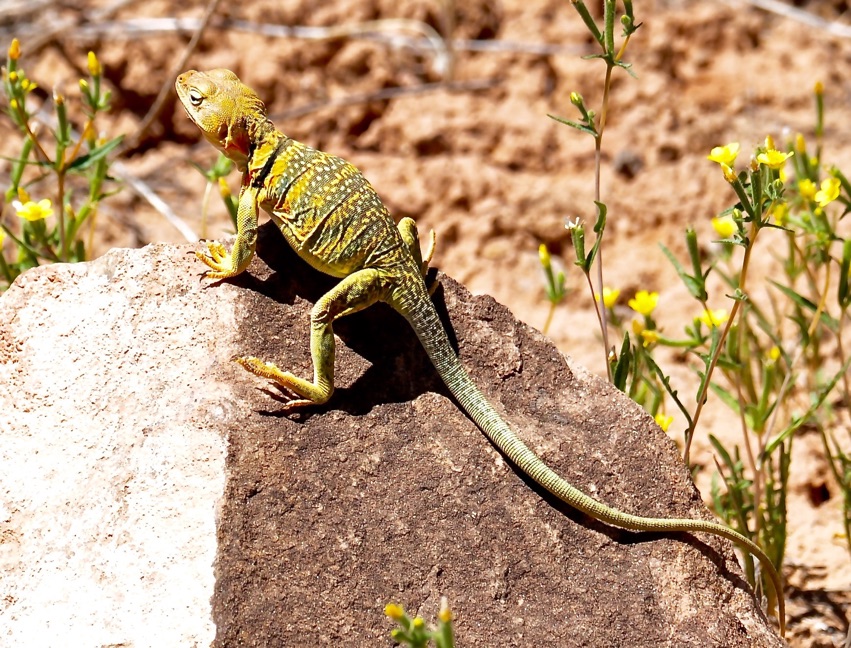
North America has 155 species of lizards classified into eight families native to the continent. A few of these species that arrived to the continent during the years of conquest are now considered established introduced reptiles. The evolutionary origin of all lizard species arose during the Triassic Period of geological time and lizards today make up the largest living group of the class Reptilia.
The tail of an adult collared lizard is usually twice the length of the body. Their tails tend to be thicker than wider. The tail of a male collared lizard is somewhat flattened. The tail is not easily broken off and if it is removed, does not grow back. Collared lizards are known for their robust bodies with a large head and powerful teeth-filled jaws.
Defining marks
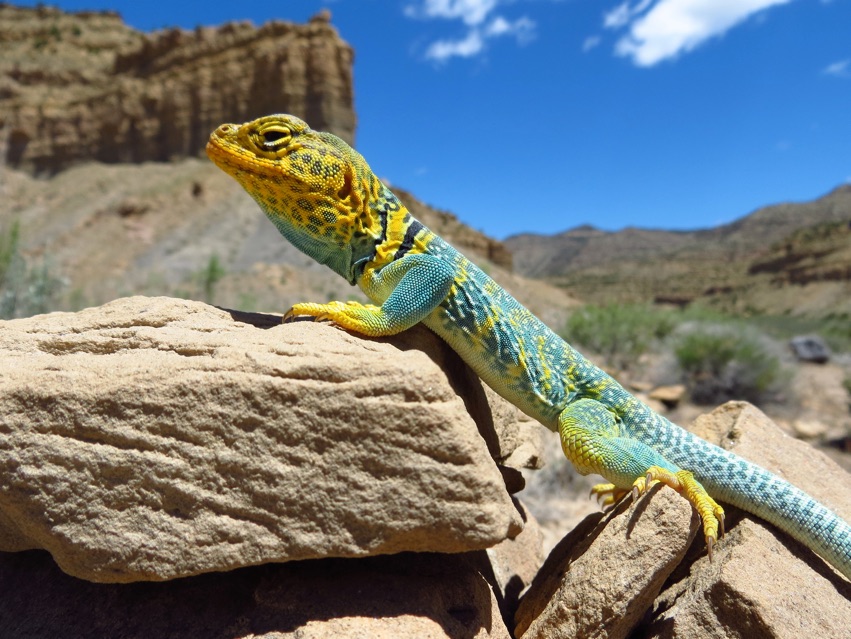
Collared lizards are so named for the two large black bands that circle their necks. Adults range in size from 9 inches (23 centimeters) to 15 inches (38 cm). Males are colorful shades of blue, green, yellow and browns. Females tend to be duller shades of grayish blue-green or even beige. Collared lizards have back legs that are approximately three times longer than their front legs. These powerful back legs allow the collared lizards to "stand up" and run very fast for short distances. Some individuals have been clocked running faster than 16 miles per hour (26 km/h).
Lookout spot
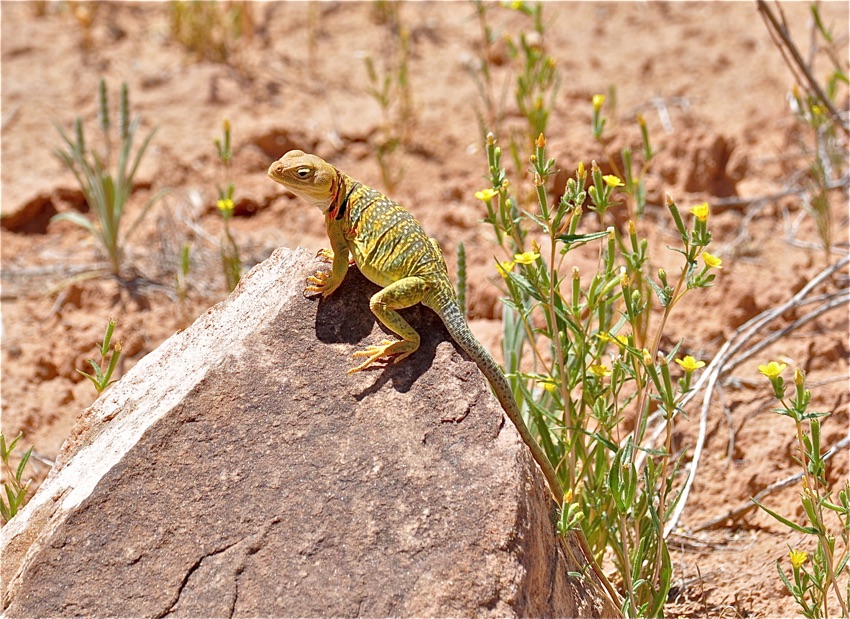
The various species of collared lizards are found from western Missouri westward through the American deserts to the Pacific Ocean and into northern and the Baja regions of Mexico. They thrive in dry, rocky environments, especially along washes and in canyons. These diurnal lizards prefer to sun while sitting atop boulders, which also act as ideal lookout sites for both prey and potential competitors and predators. The rocky environment also acts as a place for the lizards to nest and hide. A Western Collared lizard is seen here perched on a large boulder at Arches National Park in Utah.
Flashy creatures
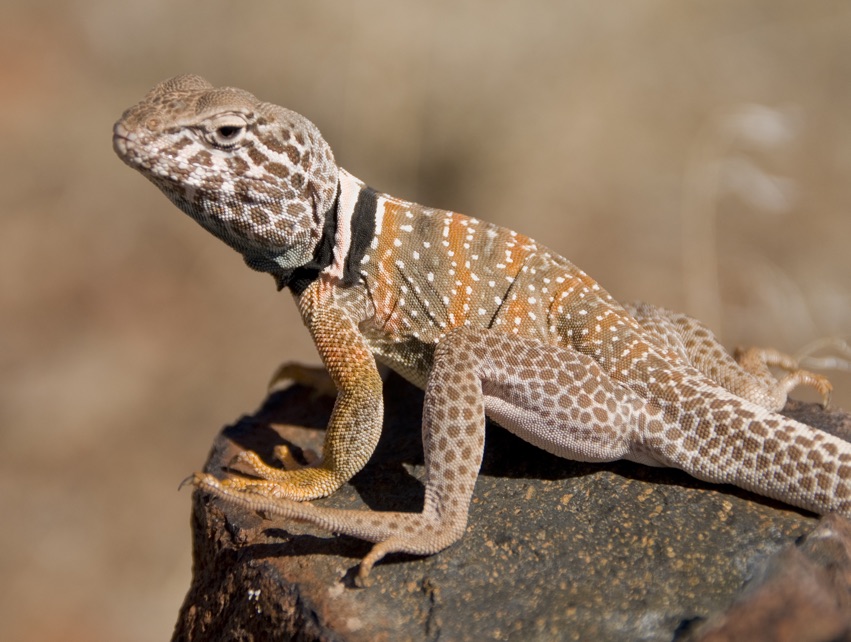
Collared lizards are extremely territorial and are thought to be the most visually oriented of all lizard species. The flashing of color and behavioral gestures are extensive and common. Body push-ups , head bobbing and open-mouthed displays are a daily behavioral ritual, especially during mating season. Collared lizards, like this reticulated collared lizard, (Crotaphytus reticulatus), shown here, will show a variety of displays using their colorful bodies to warn off potential mating rivals and territorial competitors.
Smooth and scaly
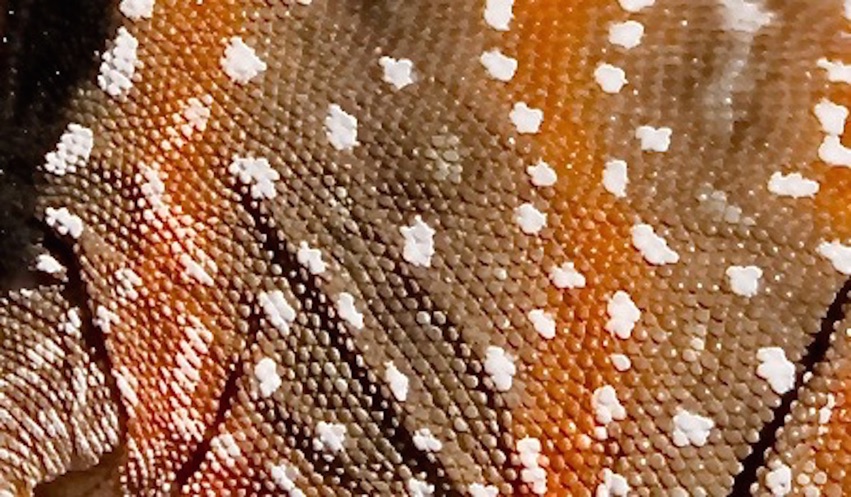
The skin of the collared lizard is not only colorful but smooth and granular. This texture makes for a body appearance that looks more like skin than scales. Their fine scales are almost circular in shape.
Family lines
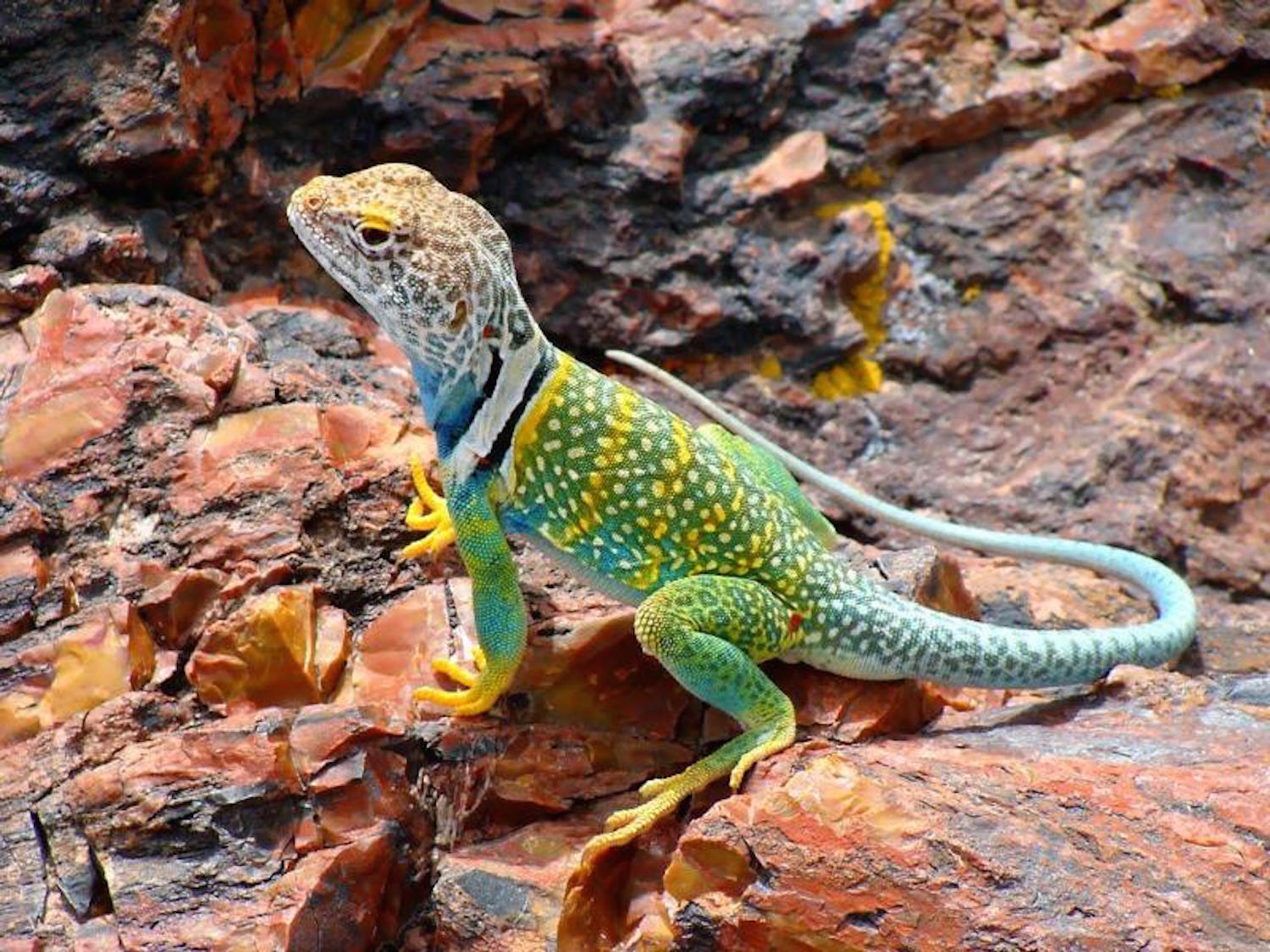
Igunaidae is one of those native North American lizard families composed of 14 genera and 44 unique and colorful species. Iguanids can range in length from only 4 inches (10 cm) to an amazing 72 inches (183 cm). Most iguanid species are carnivorous, dining on insects, other smaller lizards and small snakes. Occasionally, they will make a meal composed of plant leaves and flowers. A sub-family of Iguanaidae are the Crotaphytidae species and are commonly known as Collared and Leopard lizards. The spectacular Western Collared Lizard, Crotaphytus collaris), is shown here.
Get the world’s most fascinating discoveries delivered straight to your inbox.
Living on high
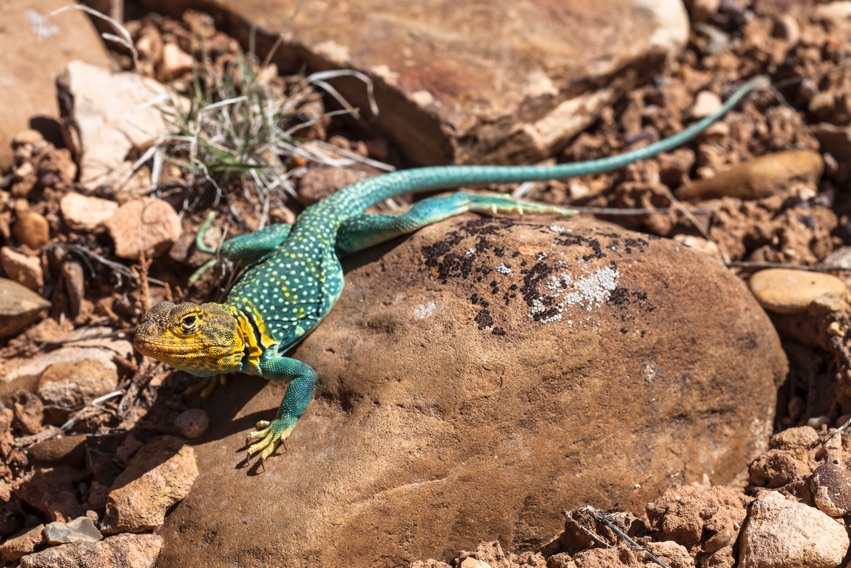
Collared lizards are commonly found at elevations ranging from sea level to 7,500 feet (2,290 meters). They thrive across the desert scrub biomes of the Sonoran, Mohave and Great Basin Deserts. Like all the plants and animals found in desert scrub biomes, the collared lizard has adapted well to the limited annual rainfall, between 10-20 inches (25 -51 cm) per year, and the extreme hot and cold temperatures found across the vast landscape dominated by a sea of scrubs.
Pack the power
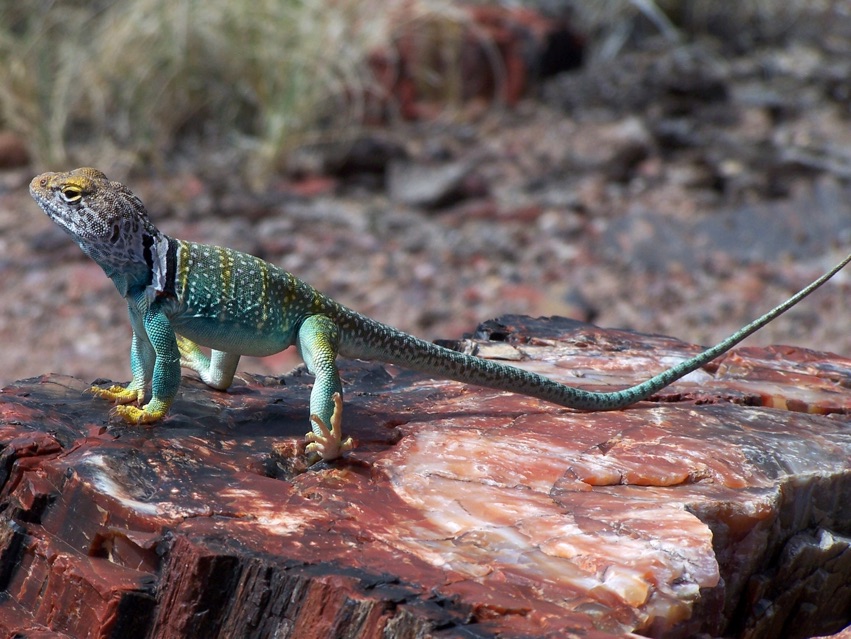
The powerful jaws of the collared lizard allow them to be most aggressive and deadly hunters. With their quick burst of speed the lizard's jaws will quickly catch and clamp down on available arthropod, small snakes or other lizards including their own young. Some have suggested that they have become the modern day Tyrannosaurus rex of the desert shrub community. But these hunters often become the hunted by local hawks, roadrunners, coyotes and large venomous snakes. This collared lizard oversees his territory while sitting on a large trunk of petrified wood in Petrified Forest National Park in northeastern Arizona.
Playing the field
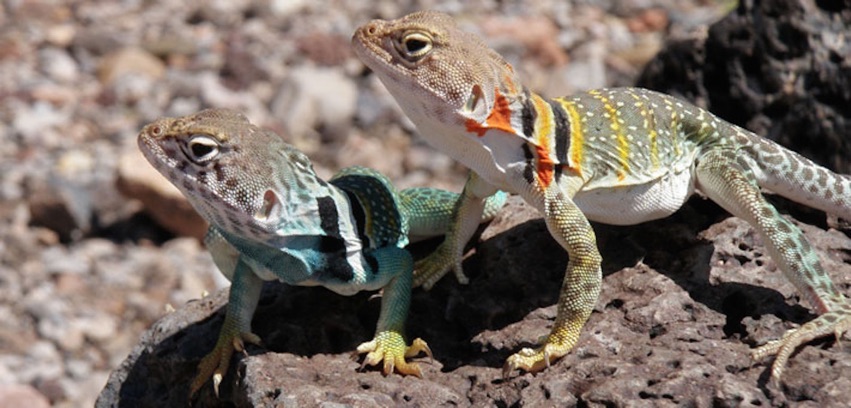
Mating of collared lizards begin each spring with the dominant males bobbing their heads rapidly in hopes that a female will accept their advances. Once mating has successfully occurred, the female will develop red/orange spots near her neck, indicating that she is gravid. A clutch of seven to 12 eggs are laid in damp, dark holes dug under a nearby boulder about 21 to 28 days after mating. Approximately six weeks later, the eggs will hatch and the young, vulnerable lizards are totally on their own to try and survive. Female collared lizards are capable of retaining sperm and several clutches of eggs can be laid each summer without mating again.
Staycation, here we come
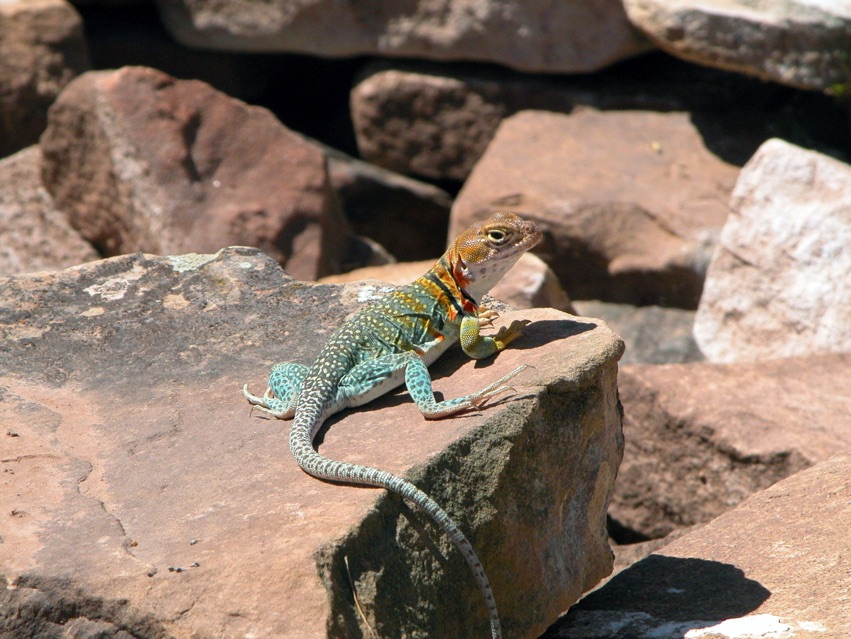
When the warmth of the summer begins to wane, the cold-blooded collared lizards begin to prepare for a long winter of hibernation. They stop eating so that their gut is void of food, since any intestinal food would rot over the long winter months and poison the hibernating reptile. When the days of spring begin to lengthen once again, their still, dormant bodies will begin to release the chemicals and hormones to prepare both male and female lizards for another cycle of reproduction when they awake from their annual sleep.
Home to some

The great North American deserts are often portrayed as barren and bleak landscapes, void of color and beauty. But the many species of collared lizards that live in this land of little rain and extreme temperatures add an almost tropical splash of vivid colors to the dominant shades of brown that are so commonly found here. Famed environmentalist Edward Abbey wrote in his book "Desert Soltaire" (McGraw-Hill Education, 1968) that it is the unexpected found in nature that "startle the senses and surprise the mind out of their ruts of habit, to compel us into a reawakened awareness of the wonderful - that which is full of wonder." It's possible that the beautiful collared lizards of the North American deserts were on Abbey's mind at the time.


